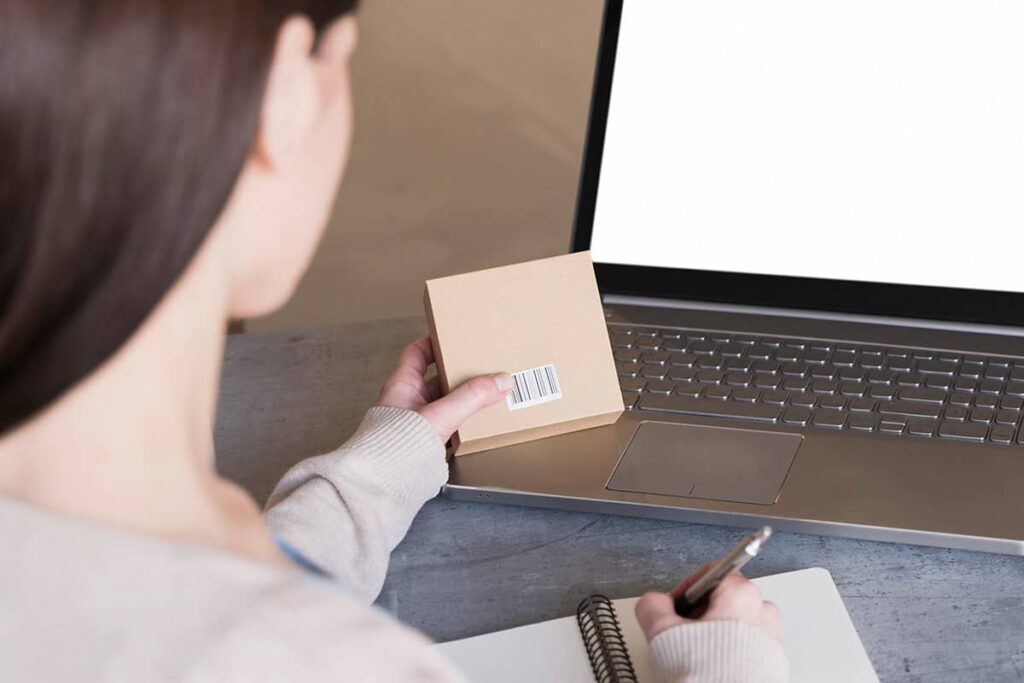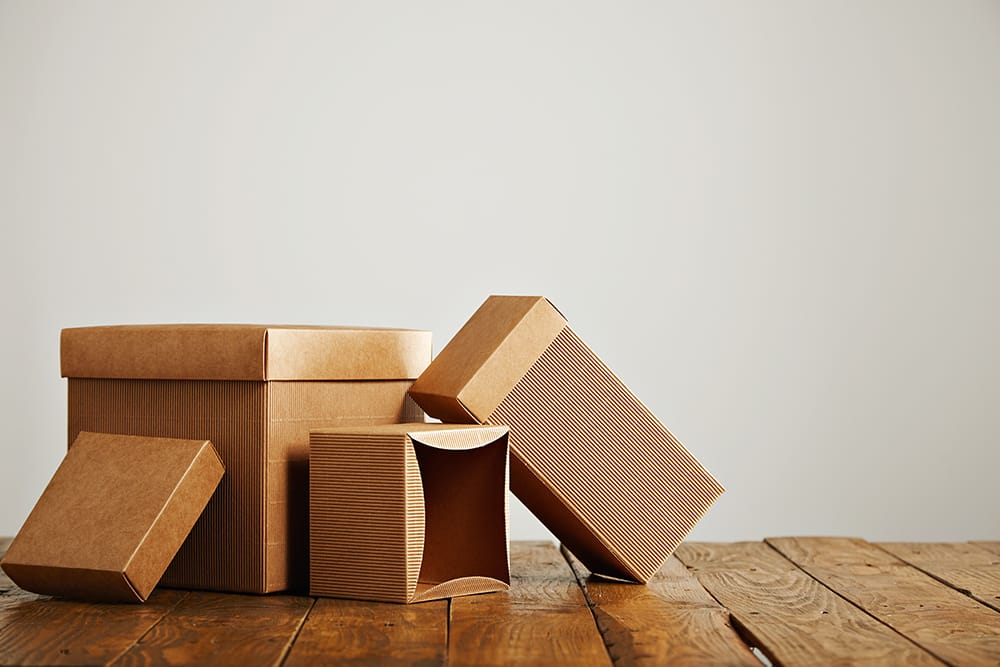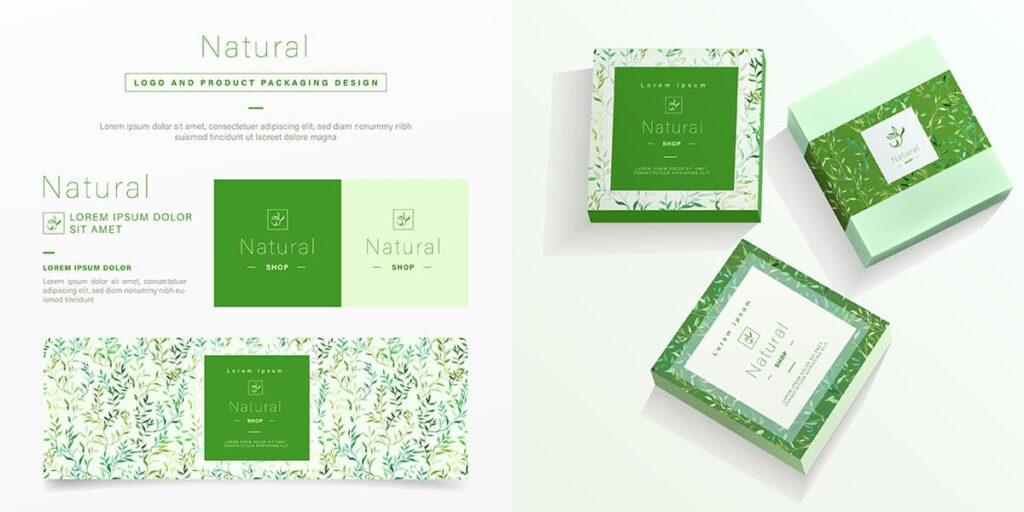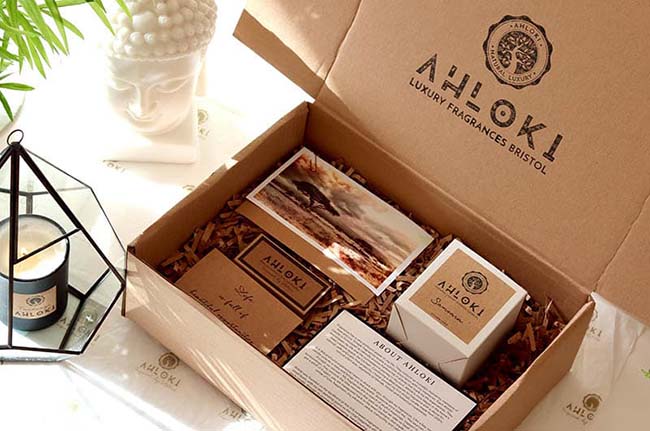Packaging doesn’t just shield goods—it actively communicates your brand ethos and shapes how consumers perceive product quality. In a world increasingly influenced by unboxing videos, social sharing, and ethical concerns, custom packaging has become an essential element of marketing and brand strategy. According to Fortune Business Insights, the global custom packaging market reached USD 43.88 billion in 2023, reflecting the strong appetite for brand-tailored boxes, wraps, and containers.
So why does custom packaging matter, and how do you design and produce it effectively? Below, we’ll explore the importance of customization, essential design principles, a straightforward step-by-step production process, and best practices for ensuring your packaging captures attention while serving real-world practicalities.
Understanding the Importance of Customized Packaging
Before diving into design methods or materials, it’s crucial to grasp why customization is so impactful. While generic or stock packaging might save time, it often lacks the emotional resonance and brand distinction that modern consumers crave.
Differentiation in a Competitive Marketplace
Shelves (both physical and digital) overflow with products vying for shopper attention. Customized packaging—through unique shapes, eye-catching graphics, or specialized finishes—can separate your items from the crowd. This is particularly vital if you’re targeting premium segments or hoping to convert first-time buyers into loyal fans. A compelling box or bag might be the tipping point that prompts a customer to choose your brand over a competitor’s.
Enhanced Brand Recognition and Storytelling
Packaging acts as a canvas for brand storytelling. Logos, brand colors, slogans, or educational info about product origins all converge on the outer surfaces. Unwrapping can become an immersive experience if each design choice—from the opening flap to the color scheme—reinforces who you are and what you stand for. Over time, consistent packaging fosters a sense of familiarity that keeps your brand top of mind.
Consumer Emotions and Loyalty
A unique, thoughtful unboxing or packaging reveal can spark genuine excitement—perhaps leading to social media shoutouts or word-of-mouth endorsements. Buyers often share visually appealing packages on Instagram or TikTok, effectively becoming brand advocates. These organic endorsements can be priceless, amplifying your marketing reach. Conversely, a dull or flimsy container might discourage repeat purchases or even cast doubts about product quality.
Meeting Evolving Customer Expectations
Today’s audiences expect more than just a functional box. They appreciate packages that reflect sustainability, aesthetics, and practical convenience (like reusability or easy disposal). Custom packaging allows you to address these demands directly, incorporating recycled materials, minimal plastic usage, or design features that facilitate reuse.
Key Elements of Effective Custom Packaging
While brand preference and budgets vary, certain core principles help ensure packaging hits the mark. Think of these as pillars for design success, bridging brand identity with consumer gratification.
Aesthetics and Cohesion
Packaging design should echo your brand voice—whether it’s whimsical, minimalist, retro-chic, or ultra-modern. Strive for cohesive visuals: consistent color palettes, harmonious fonts, and balanced layout. Even small details like inner flap text or an understated brand pattern can unify the design. Remember that consumers often judge product quality based on packaging’s look and feel.
Protection and Practicality
However stylish, packaging fails if it doesn’t safeguard the product effectively. Assess how items will be stored, shipped, or displayed. Does the packaging need a secure seal to keep out moisture? Should it withstand multiple shipping handovers? Good custom packaging merges visual flair with robust structural engineering, ensuring your goods arrive intact while maintaining brand allure.
User Experience (UX) & Convenience
In an era of unboxing videos, the tactile journey—opening flaps, peeling off labels, unveiling hidden compartments—enhances product perception. Decide if your design calls for multiple layers (outer box, inner protective wrap, inserts) or a simpler one-step approach. Also, consider reclosable or portion-friendly pouches for items like snacks. Good packaging fosters convenience, making it easy to open, store, or recycle.
Eco-Friendliness
As ecological concerns rise, an increasing number of consumers scrutinize packaging’s environmental footprint. Using biodegradable materials, minimal inks, or advising customers on recycling can signal your brand’s planet-friendly approach. This resonates with segments that prefer or even demand greener solutions.
Step-by-Step Process to Create Customized Packaging

Crafting effective custom packaging can feel daunting, but breaking it down into five fundamental steps simplifies the journey. From defining your needs to finalizing production, each step ensures strategic alignment with brand goals and consumer expectations.
1) Identify Your Needs
- Product Requirements: Note item dimensions, fragility, and whether you need vacuum sealing, protective inserts, or specific barrier properties (moisture, UV, etc.).
- Brand & Marketing Aims: Clarify the brand story you want your packaging to convey. Are you aiming for luxury, artisanal charm, or a playful youth vibe? Each direction calls for different design elements and finishing.
Why This Matters
Knowing your packaging’s functional and aesthetic goals helps you cut through infinite design options. It’s much easier to approach suppliers or designers when you can articulate exact constraints (like temperature or shipping conditions) and brand tone (like minimal lines or bold typography).
2) Select a Style
- Structural Format: Boxes (two-piece, folding cartons, rigid), bags (paper, poly mailers), or creative shapes (pyramids, tubes)?
- Opportunities for Branding: Some shapes lend themselves to broad printing surfaces, while others highlight the product through partial windows.
- Sustainability and Materials: Certain styles (like mailer envelopes) can use less material than large custom boxes, aligning with eco-friendly objectives.
Why This Matters
A well-chosen packaging style not only protects the product but also elevates brand presence on shelves or in online unboxing moments. For instance, a collapsible box might reduce shipping costs but might not exude the same premium feeling as a rigid setup.
3) Design Your Package
- Conceptual Sketches and Digital Tools: Start with rough hand sketches or use design software (e.g., Adobe Illustrator, specialized packaging CAD).
- Visual Hierarchy: Pinpoint brand logos, taglines, or imagery that should stand out. Carefully place barcodes or regulatory labels to keep brand visuals uncluttered.
- Color Calibration: Kraft backgrounds might shift brand colors if not accounted for; pastel shades on brown surfaces can appear muted. Similarly, plan how brand-coded hues appear on coated or uncoated stocks.
Why This Matters
Design synergy ensures each visual element (logo, brand color, text) seamlessly merges with the structure. Poor alignment or unrefined layouts can muddle brand messaging and degrade consumer impressions.
4) Prototype
- Sample Creation: Request a physical or digital (3D-printed) prototype from your packaging supplier. If brand colors are vital, ensure they do a print run that matches final production methods to gauge accuracy.
- Testing: Evaluate sample sturdiness, color fidelity, ease of assembly, and user-friendliness. For shipping scenarios, run rudimentary stress tests—like drop or compression tests.
- Feedback & Revisions: Involve cross-functional teams—marketing, logistics, possibly even a small focus group—to gather opinions on aesthetics, handling, or brand resonance.
Why This Matters
Prototyping weeds out design missteps (like overshadowing brand logos or insufficient protective inserts). It prevents expensive reprints or consumer disappointment from unexpected flaws.
5) Finalize Production
- Mass Production Setup: Sign off on final design files, confirm your order volume, and lock in finishing options (e.g., matte or gloss lamination, foil stamping).
- Quality Assurance Plan: Pre-agree with your supplier on tolerance levels for color variation, printing alignment, or structural uniformity.
- Logistics and Delivery: Discuss lead times, shipping costs, or potential warehouse storage if you’re ordering large volumes. Ensure an open communication channel for reorders or subsequent design updates.
Why This Matters
Seamless execution at this stage prevents last-minute confusion about volumes, shipping timelines, or invoice details. By finalizing terms clearly, you pave the way for consistent, timely deliveries that maintain brand continuity.
Choosing the Right Materials for Your Packaging

Even the most visually appealing design can fail if the chosen material can’t handle shipping demands or warps in certain climates. Balancing durability, sustainability, and brand aesthetics is key.
Paperboard and Cardboard
- Pros: Printable surfaces, cost-effective, widely recyclable.
- Cons: Might require lamination or coatings for moisture resistance.
- Brand Fit: Great for brands touting natural or craft vibes, or needing basic shipping strength.
Corrugated Fiberboard
- Pros: Enhanced structural integrity for heavier or bulk items, good shock absorption.
- Cons: Bulkier, sometimes less refined visually unless you add finishing layers.
- Brand Fit: E-commerce or subscription boxes requiring durability in transit.
Plastic and Bioplastics
- Pros: Clear windows, flexible pouches, or contoured shapes for specialized products.
- Cons: Environmental concerns about plastic disposal unless using certified biodegradable versions.
- Brand Fit: If shelf life or total barrier properties outrank sustainability in brand priorities.
Specialty and Eco Materials
- Pros: Unique textures, biodegradable credentials, novelty factor.
- Cons: Possibly higher cost, uncertain supply or lead times, or less robust barrier.
- Brand Fit: Perfect for artisanal or high-end lines emphasizing exclusivity and green stewardship.
Designing Your Packaging: Tips and Best Practices
A successful design balances creative flair and user-centric details. Below are top suggestions to ensure your packaging resonates with consumers and stays cohesive with brand guidelines.
Prioritize Clear Branding
- Brand Logos and Colors: Incorporate consistent brand icons, keep text legible, and avoid overcrowding.
- Messaging Hierarchy: The brand name or a tagline might appear on top flaps, while secondary info (like product descriptions) can appear inside.

Utilize Negative Space
- Embrace Minimalism: White or plain space can accentuate crucial visuals. Overly busy designs risk confusing the eye.
- Strategic Splashes of Color: Let your brand shade or pattern stand out by contrasting with neutral backgrounds.
Think About the Consumer Journey
- Unboxing Flow: Guide the customer step by step, from removing an outer wrap to unveiling the product inside. Additional notes or inserts can highlight brand stories or user tips.
- Tactile Elements: Soft-touch coatings, raised logos, or cutout shapes enrich the physical experience.
Incorporating Branding into Your Custom Packaging
Brand identity weaves across color palettes, logos, slogans, typography, and even subtler cues like shape or finishing. When done well, customers instantly recognize a brand by its packaging silhouette or color scheme.
Telling a Story
- Narrative Elements: Short brand messages (like mission statements, local heritage references) on the interior or under the flap help consumers connect with the brand.
- Series or Seasonal Packaging: Changing motifs for holidays or special editions fosters collectability and refreshes consumer interest.
Balancing Subtlety and Impact
- Understated Elegance: If your brand projects minimal sophistication, a small embossed logo on a single-color box might suffice.
- Bold Expressions: For playful or youth-oriented lines, bright prints or comedic brand text can amplify personality.
Enhancing Customer Experience with Unique Packaging
An unboxing journey can create memorable experiences, spark social media buzz, and solidify brand loyalty.
Multi-Layer Reveals
- Layering: Add tissue, compartments, or inner wraps for a sense of discovery. This suits premium or giftable products—like cosmetics, candles, or specialty foods.
- Thematic Surprises: Small brand freebies, custom postcards, or discount coupons can further sweeten the moment.
Personalization
- Name Prints: Some brands print each buyer’s name or a short message for personal flair.
- Handwritten Notes: If feasible, a quick “Thank you for choosing us!” can resonate strongly, especially for artisanal or small-scale sellers.
Minimizing Hassle
- Easy-Open Features: Perforations, tear strips, or pull-tab adhesives allow quick access without damaging the box. This convenience fosters positive brand associations.
Sustainability in Custom Packaging: Trends and Practices

Today’s eco-conscious consumers often scrutinize packaging for recyclability, compostability, or minimal resource usage. This is both a marketing opportunity and a responsibility in reducing environmental impact.
Biodegradable or Recycled Materials
- Paper/Pulp Over Plastic: Emphasize how adopting paper-based solutions can cut plastic footprint. If plastic is necessary, highlight partially recycled or biodegradable films.
- Inks and Coatings: Vegetable-based inks or water-based adhesives reduce toxicity. Spot finishes can also be more eco-friendly than full lamination.
Designing for Reuse
- Second-Life Concepts: Encourage reusing boxes for storage. If your brand’s packaging can transform into a small display or foldable container, it extends brand presence in customers’ homes.
- Minimal Packaging: Stripping away excessive wraps or filler can underscore a brand’s sincerity about waste reduction.
Selecting a Reliable Packaging Supplier
Your design is only as good as the supplier that executes it. Partnering with the right manufacturer ensures consistent quality, timely delivery, and scope for innovation.
Assessing Capabilities
- Printing Processes: Check if they handle offset, digital, or screen printing. Each method affects color accuracy and finishing range.
- MOQ and Scalability: Some vendors excel at large runs but may be inflexible on smaller orders, or vice versa. Confirm alignment with your brand’s growth projections.
Verifying Communication and Quality Controls
- Samples and Prototypes: Request physical samples to evaluate print clarity, color accuracy, and structural durability.
- Reviews or References: Talk to past clients, particularly those with packaging needs akin to yours. Good communication fosters smoother design revisions and fewer surprises.
Building a Partnership
- Long-Term Potential: If you anticipate expansions or product line evolutions, find a supplier open to co-creating new designs or adopting advanced finishes.
- Problem-Solving: Packaging hiccups happen—whether production delays or unexpected color mismatch. A supplier’s approach to rectify issues swiftly is crucial for brand trust.
Measuring the Impact of Your Custom Packaging
Quantifying how your newly designed packaging improves brand outcomes can validate the time and cost invested:
Sales Lift and Conversion Rates
Track if updated packaging correlates with higher sales or new user interest. E.g., an e-commerce brand might see reduced cart abandonments if shipping looks more professional.
Customer Feedback and Reviews
Check unboxing reviews, social posts, or star ratings. If customers mention the packaging as a highlight, that’s an immediate brand win.
ROI on Price Premium
Evaluate if your brand can command a slightly higher price or if existing customers reorder more often, offsetting packaging costs.
Social Media Engagement
With many unboxing videos posted daily, track brand mentions or hashtags to gauge how frequently your packaging drives online chatter.
Common Mistakes to Avoid When Creating Custom Packaging
Mistakes can undermine brand potential and inflate production expenses. Below are pitfalls to watch for:
Overly Complex Graphics or Finishes
Too many colors, fonts, or layered effects can cause printing alignment issues or visual clutter. Start with a cohesive design plan.
Inconsistent Brand Elements
Failing to use correct logos, brand colors, or typefaces can confuse returning customers who expect consistent brand visuals.
Skimping on Protective Features
A pretty exterior that fails to guard fragile items leads to product damage, returns, and negative reviews.
Ignoring Regulatory or Labelling Requirements
Omitting mandated warnings, instructions, or universal recycling symbols can trigger legal troubles. Always cross-check local and international guidelines.
Frequently Asked Questions About Creating Customized Packaging
1. What are the benefits of customized packaging?
Customized packaging fosters instant brand recognition, conveys quality, and can enhance user delight—often boosting loyalty, referrals, and the ability to stand out in competitive markets.
2. How can I design my own custom packaging?
Identify product specs, brand aesthetics, and budget. Use design tools or templates for structural outlines, integrate brand visuals, and prototype with a packaging supplier to refine.
3. What materials are best for custom packaging?
It depends on product needs and branding. Options range from corrugated cardboard (durability) or paperboard (print-friendly) to eco-friendly alternatives like compostable pulp or bioplastics.
4. How much does custom packaging cost?
Costs vary by materials, printing complexity, finishing (e.g., foil or embossing), and order volume. Bulk runs can reduce per-unit costs, but intricate designs raise total expenses.
5. What are the latest trends in custom packaging?
Trends include minimal, eco-focused designs, interactive AR or QR elements, and more robust reusability features. Personalization and short-run exclusives also remain popular.
6. How does custom packaging affect brand perception?
Thoughtful, cohesive designs suggest professionalism and care, encouraging consumer trust. Conversely, generic or poorly executed packaging might downplay product value.
Conclusion: Launching Your Brand with Customized Packaging
Customized packaging unites function, aesthetics, and brand storytelling in a single physical element—often the first thing your customer interacts with before discovering what’s inside. By understanding the significance of packaging, mastering core design principles, following a step-by-step creation process, and emphasizing brand synergy, you can develop packaging that stands out in a competitive landscape.
Whether your approach highlights minimal lines, playful prints, or eco-friendly innovations, each packaging decision speaks volumes about what your brand values and how it aims to delight its audience. With consumers increasingly seeking out memorable unboxing experiences, the time is ripe to invest in custom packaging that embodies your brand personality, fosters loyalty, and potentially drives higher conversions. Embrace the steps outlined here—from clarifying product needs to final production—and watch as your brand reaps the benefits of packaging that’s both protective and impressive.
Contact for a Free Consultation!

